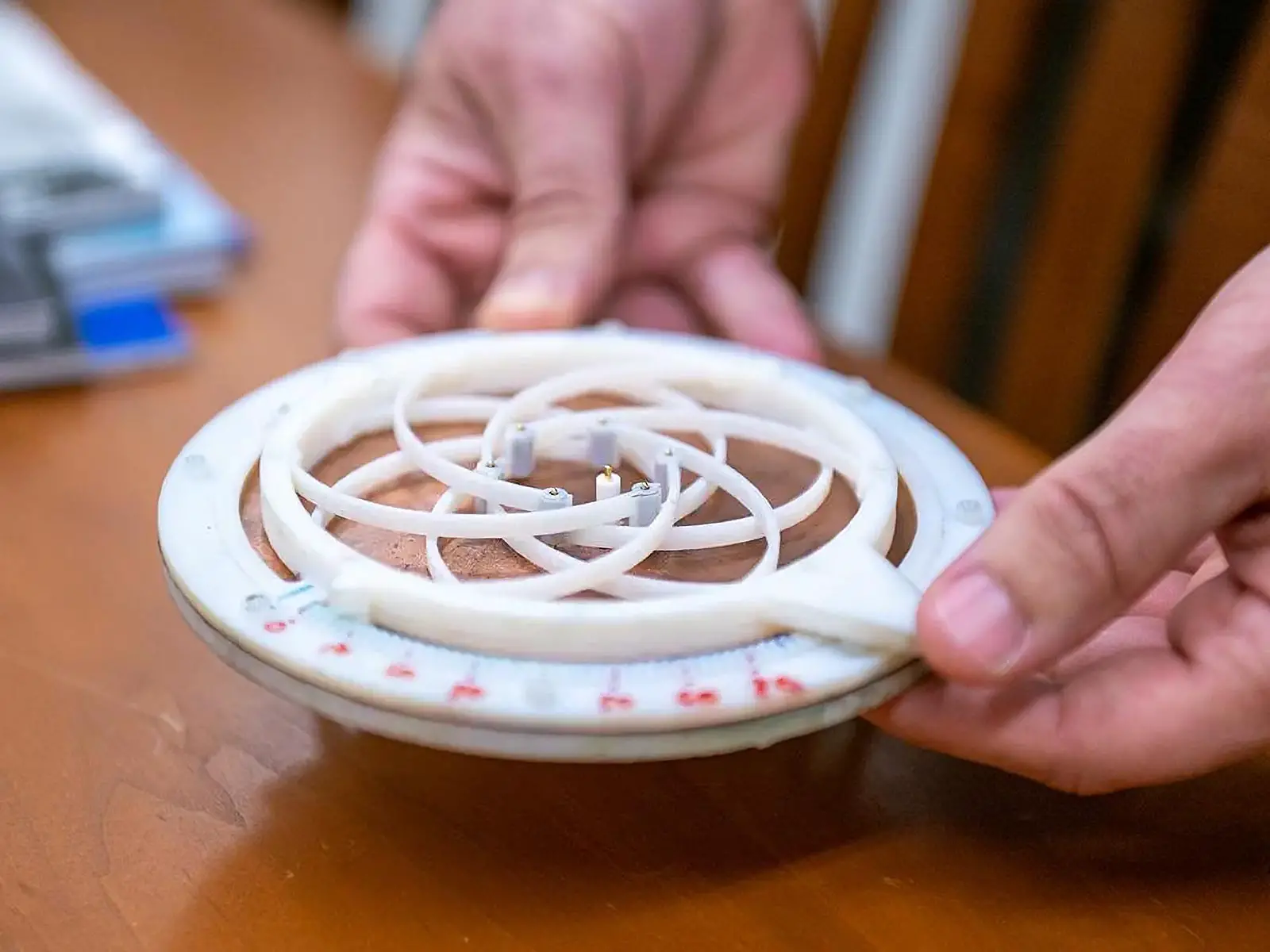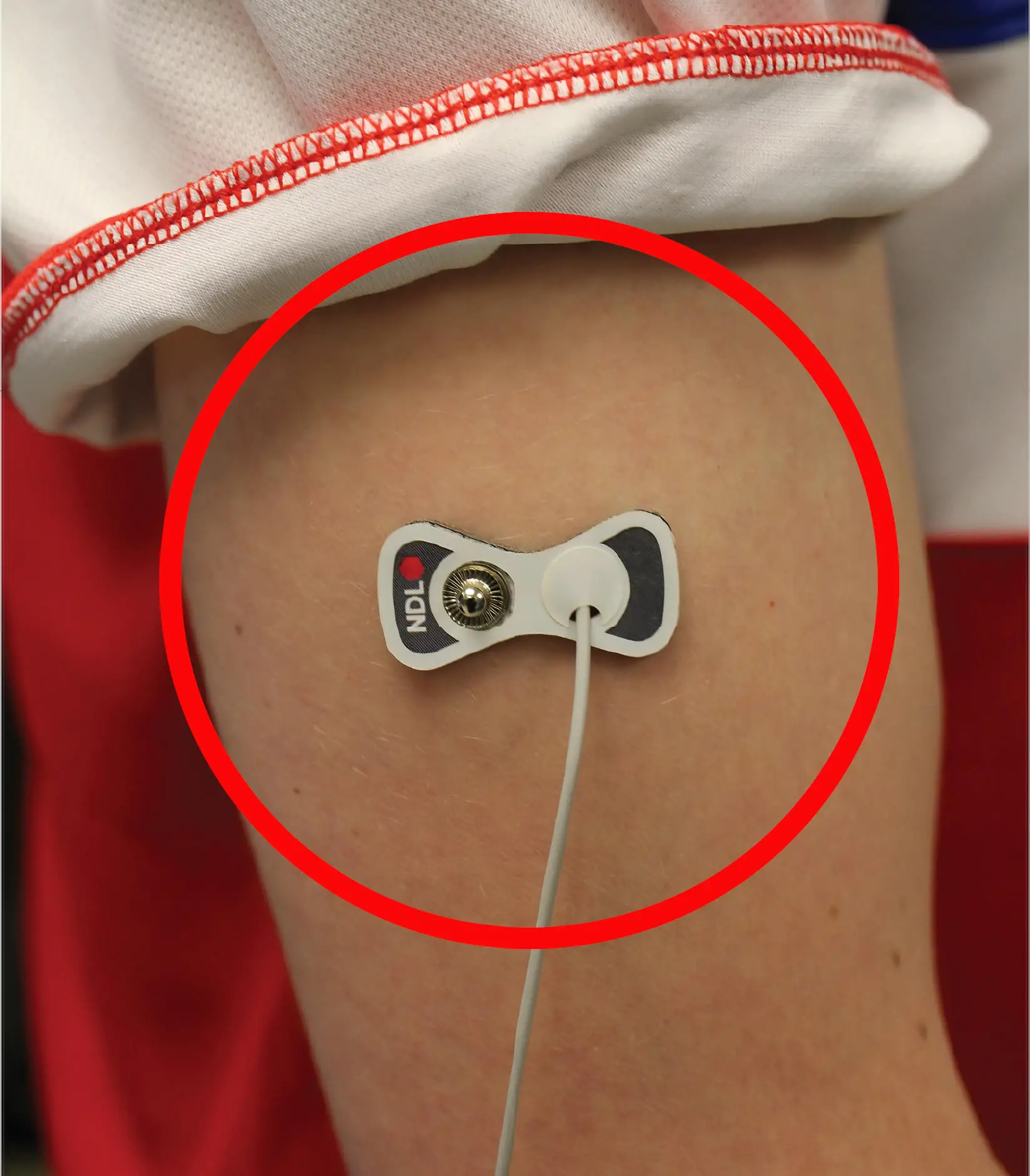Los investigadores ilustraron y diseñaron un prototipo de antena de parche circular en forma de iris utilizando un software comercial de simulación electromagnética. Aunque el prototipo es solo un poco más grande que la palma de una mano humana, la tecnología se puede escalar al nivel de IC para frecuencias más altas o se puede escalar en tamaño para aplicaciones de baja frecuencia, dicen los investigadores. Crédito: Jeff Xu/Estado de Penn
Los investigadores están creando una antena reconfigurable compatible con un mecanismo compatible.
Las antenas reconfigurables, aquellas que pueden ajustar propiedades como la frecuencia o los haces de radiación en tiempo real, de forma remota, son una parte integral de los futuros sistemas de redes de comunicación, como 6G. Pero muchos diseños de antenas reconfigurables actuales pueden fallar: funcionan mal a temperaturas altas o bajas, tienen limitaciones de energía o requieren un mantenimiento regular.
Para hacer frente a estas limitaciones, los ingenieros eléctricos de la Facultad de Ingeniería de Penn State combinaron electroimanes con un mecanismo compatible, que es el mismo concepto de ingeniería mecánica detrás de los clips de encuadernación o un arco y una flecha. Publicaron hoy (13 de febrero de 2023) su antena de parche compatible con el mecanismo reconfigurable de prueba de concepto en la revista
“Compliant mechanisms are engineering designs that incorporate elements of the materials themselves to create motion when force is applied, instead of traditional rigid body mechanisms that require hinges for motion,” said corresponding author Galestan Mackertich-Sengerdy, who is both a doctoral student and a full-time researcher in the college’s School of Electrical Engineering and Computer Science (EECS). “Compliant mechanism-enabled objects are engineered to bend repeatedly in a certain direction and to withstand harsh environments.”
When applied to a reconfigurable antenna, its complaint mechanism-enabled arms bend in a predictable way, which in turn changes its operating frequencies — without the use of hinges or bearings.
“Just like a chameleon triggers the tiny bumps on its skin to move, which changes its color, a reconfigurable antenna can change its frequency from low to high and back, just by configuring its mechanical properties, enabled by the compliant mechanism,” said co-author Sawyer Campbell, associate research professor in EECS.
The compliant mechanism-enabled designs supersede existing origami design technologies, named after the Japanese art of paper folding, which are reconfigurable but do not have the same advantages in robustness, long-term reliability, and high-power handling capability.
“Origami antenna designs are known for their compact folding and storage capabilities that can then be deployed later on in the application,” Mackertich-Sengerdy said. “But once these origami folded structures are deployed, they usually need a complex stiffening structure, so that they don’t warp or bend. If not carefully designed, these types of devices would suffer environmental and operational lifetime limitations in the field.”
The team illustrated and designed a circular, iris-shaped patch antenna prototype using commercial electromagnetic simulation software. They then 3D printed it and tested it for fatigue failures as well as frequency and radiation pattern fidelity in Penn State’s anechoic chamber, a room insulated with electromagnetic wave-absorbing material that prevents signals from interfering with antenna testing.
Though the prototype — designed to target a specific frequency for demonstration — is only slightly larger than a human palm, the technology can be scaled to the integrated circuit level for higher frequencies or increased in size for lower frequency applications, according to researchers.
Compliant mechanism research has increased in popularity due to the rise of 3D printing, according to the researchers, which enables endless design variations. It was Mackertich-Sengerdy’s background in mechanical engineering that gave him the idea to apply this specific class of compliant mechanisms to electromagnetics.
“The paper introduces compliant mechanisms as a new design paradigm for the entire electromagnetics community, and we anticipate it growing,” said co-author Douglas Werner, John L. and Genevieve H. McCain Chair Professor of EECS. “It could be the branching off point for an entirely new field of designs with exciting applications we haven’t dreamed of yet.”
Reference: 13 February 2023, Nature Communications.
DOI: 10.1038/s41467-023-36143-6
The Penn State College of Engineering’s John L. and Genevieve H. McCain endowed chair professorship supported this work.
![]()




